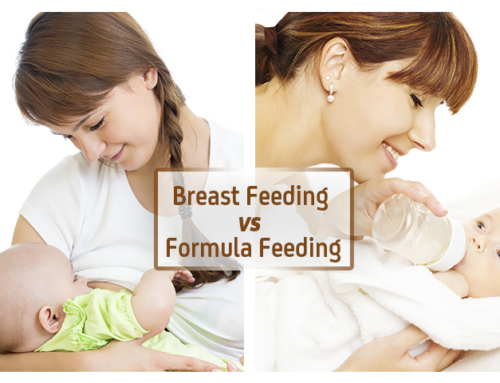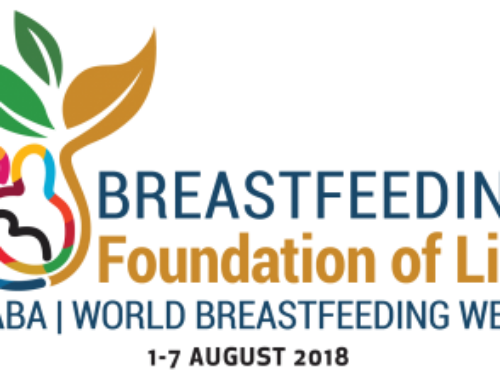It shouldn’t be surprising to anyone that breastfeeding as a public health matter has been both making a comeback, but also facing immense criticism. The backlash against public measures to promote breastfeeding as “best” for baby (actually it’s just biologically normative) is immense with entire foundations created to try and counter the narrative that “breast is best” (again, not best, normal). For many of us who work to promote and support breastfeeding, it can feel overwhelming and somewhat disorienting to see such attacks against something so… normal.
What is happening that would result in women being so angry about a message that is aimed to help babies and provide better health outcomes for all? A recent survey of pediatricians
The Backstory
The American Academy of Pediatricians (AAP) adopted a policy statement in 2005 that declared breastfeeding the “optimal” way to feed a baby, providing the best health outcomes, and suggesting 6 months of exclusive breastfeeding. This policy was reaffirmed in 2012 and included an acknowledgement of the critical role of the pediatrician in the community and in individual practices in helping mothers obtain this goal. To support this, the AAP shared the “Ten Steps to Successful Breastfeeding” devised by the WHO and Unicef (they officially endorsed the Ten Steps in 2009), seen below.

Why the need for such a policy? Back in 1995, survey data found that only 65% of the pediatricians who responded to the survey recommended exclusive breastfeeding for the first month after birth and only 38% recommended breastfeeding continue for a full year. Most doctors were unaware of the Baby-Friendly Initiative in hospitals. The hope was that the policy and sharing the Ten Steps would help improve this.
By 2004, a new survey showed that although pediatricians reported being more prepared to help families breastfeed and they had “improved counseling strategies” in line with the Ten Steps, the actual attitudes of pediatricians towards breastfeeding and support for it had decreased. This, despite the accumulation of research that highlighted even more so the risks of veering away from breastfeeding on babies and mothers.
Between 2004 and 2013, there has been even more of a push to help increase awareness, advocacy, and education on breastfeeding. In 2008, formal training was designed to help trainees in pediatrics, family medicine, internal medicine, and obstetrics and gynecology learn how to properly promote breastfeeding in their offices. More research has been done to identify barriers to successful breastfeeding and work towards devising approaches to help avoid these barriers, and there was success. In the USA, the percentage of children ever breastfed increased from 71.4% in 2002 to 81% in 2013 while exclusive breastfeeding for the first six months increased from 10.3% in 2003 to 22.3% in 2013.
So where does this leave us now?
The Present Survey
This was the issue at hand in the new 2014 survey. I realize that we’re now in 2018 and the research was published at the end of 2017, but this is how long data can take to reach us so it is the best we’ve got. For the 2014 survey, 51% of the randomly selected 1627 members of the AAP completed the survey. It is important to note that survey data inherently has a bias as individuals choose to respond or not, but when it comes to issues like this, it can be difficult to obtain larger-scale data via other methods.
The researchers restricted their sample to those who provide primary care for children 2 and under which left a sample of 640 pediatricians. Compared to previous surveys, more respondents were female (67.7% versus 59.7% in 2004 and 47.7% in 1995), older, had personal experience breastfeeding (or supporting a breastfeeding partner), and spent fewer hours working per week. These pediatricians were asked a variety of questions on breastfeeding based on the Ten Steps to successful breastfeeding.
What did they find?
For starters, most of the elements of the Ten Steps to Successful Breastfeeding did show improvement. More hospitals are applying to be Baby-Friendly and they are taking steps to remove the barriers in hospital. However, one of the findings was that there has been a steady reduction in the number of pediatricians who discuss breastfeeding with their pregnant patients so that the women can make an informed decision. Only 8.4% of respondents reported doing that in contrast to 11.4% in 1995.
Pediatrician counseling was improved on breastfeeding with 75.7% suggesting exclusive breastfeeding for the first month, up from 65% in 1995, but nearly unchanged from 74% in 2004. The percentage suggesting exclusive formula feeding in the first month was nearly unchanged, from 2% in 1995 to 2.9% in 2004 and 2.3% in 2014. The increase in breastfeeding exclusivity seems to have come from a decrease in suggestions of mixed feeding in the first month. Doctors are also more likely to schedule a baby’s first visit in the first 5 days than they were before (90.1% up from 51.8% in 2004) in hopes of helping identify breastfeeding problems early.
The primary differences came in the “attitudes” section of the survey. Only 57.2% of pediatricians reported that almost any mother can breastfeed if she keeps trying, down from 69.4% in 1995. There was no statistically significant change in the number of pediatricians who felt that breastfeeding and formula feeding were “equally acceptable methods”, with the number hovering around 40%, despite fewer pediatricians believing that formula fed infants are equally healthy in the long run (23.6% down from 34.5% in 1995). The belief in breastfeeding being worth it drastically declined, with only 52.9% of pediatricians saying that the benefits (ugh) of breastfeeding outweigh the difficulties or inconveniences for mothers, down from 68.3% in 1995.
Interestingly, these pediatricians beliefs in themselves as sources of support and influence has increased, with only 8.6% reporting that they have little influence on mothers’ decisions (down from 18.1% in 1995, but up from 5.8% in 2004) and a drastic decrease in the number reporting that family and friends are the most important influence on the decision to breastfeed (57.7% down from 72.4% in 1995, but up from 55.5% in 2004). The pediatricians who answered do feel confident or very confident in their ability to competently manage common breastfeeding problems, with 82.9% supporting that statement (statistically unchanged from 76.5% in 1995 and 79.4% in 2004). However, this is varied by age of doctor with younger doctors feeling less confident than older doctors.
Limitations
There are several limitations to this data, though it certainly echoes what a lot of women report with respect to support. I have already mentioned the issue with survey data as a problem at the methodological level. Although the multivariate analyses controlled for the respondent differences, the first thing we need to address is that some of the changes may simply be driven by who responded, namely more females who were older and had some experience breastfeeding. These experiences can help cement our views on the topic (for good or bad) and this can carry over into practice. We don’t know exactly which way things went without a cluster analysis and more details about the backgrounds of those who took part.
In addition to the survey element, the data is self-report and may not match what women experience with their doctors. Self-report is often biased, especially in favour of something that one feels they should be doing on an ethical or moral level and supporting breastfeeding is certainly one of them. This also ties into the issue of how the doctors interpret ideas of counseling on breastfeeding. One may feel that simply telling moms that breast is best and to breastfeed exclusively for 6 months fits the bill, whereas another will talk in more depth about what to expect and more importantly, how to get to that 6-month mark.
There are also a couple conceptual issues that deserve to be discussed. First, there is the problem that breastfeeding continues to be examined in a bubble. It is not something that exists in a bubble. Breastfeeding is a part of a mother’s life and is intertwined with her culture, her family system, her sleep arrangements, and so on. To try and take it down to something that can be advocated for without consideration of these issues means we will continue to fail to provide the necessary support.
Second, the questions on the attitude section are worded in such a way that one could take heart with the answers or not. It’s too difficult to ascertain the reasons behind the answers. For example, the question on whether or not women can breastfeed if they keep trying could reflect the huge societal barriers that prevent women from being successful, no matter how hard they try. It could also reflect a belief that breastfeeding is just too difficult for many women and that the problems are on a biological, not societal, level. Further, the question on the equality of breastfeeding and formula feeding could be seen from a medical or biological perspective or a broader societal perspective on what should be “acceptable”.
What Does It Mean?
Well, on the surface it would seem that although doctors are advising mothers to breastfeed, they don’t actually believe that women can do it or that it is worth it. If we think about the idea of “lip service”, this may be a classic example. Women are hearing tons of “breast is best” from their doctors, but are given little support and in fact the inherent beliefs of their doctors is counter to their attempts to breastfeed which can definitely have an impact through subtle and unintentional means. If someone tells you to do something, but believes that (a) you probably can’t do it, and (b) it’s not really worth it, what kind of advice are they really providing you? The researchers acknowledge this when they state that the “declining attitudes may contribute to the precipitous decline in exclusive breastfeeding over the first few months”.
There is concern over the fact that pediatricians feel so confident in their ability to manage breastfeeding issues when most women have reported that they offer bad or outdated advice, most often of the supplementing sort. The fact that they feel just as confident now as they did in 1995 is worrisome as we know how little pediatricians in 1995 knew about breastfeeding then and the prominent advice was to move to formula. Perhaps providing a bit of light is that younger doctors were less likely to report this confidence (88% v 96% on answering questions adequately and 78% v 88% on competently managing problems), though still a large majority felt confident. Perhaps these younger doctors are able to better realize that they cannot adequately address the myriad issues that face breastfeeding mothers today, or it reflects the fact that there is minimal training on breastfeeding for pediatricians.
This issue of minimal training is key because, like all areas, when we have a bit of knowledge we are more likely to feel confident. The more knowledge we obtain, the less confident we become. Like I often heard in graduate school, people with the BA are most confident in their knowledge and by the time you get to the PhD you realize we really know nothing (well, not nothing, but nuance is suddenly possible, though not always practiced). Doctors being given small amounts of information on breastfeeding may feel confident in their abilities to help mothers, but it’s doubtful that translates in practice.
What struck me here as well was how many doctors don’t discuss feeding with pregnant women. Most women encounter some breastfeeding problems, but when they haven’t thought about how to feed and what they may face, it can come as an even harder shock when they are tired and trying to adapt to a new baby. Having discussions pre-baby about feeding allows women to make an informed decision, allows them to get a support network in place ahead of time, and therefore increases the chance for success. If doctors made this one change, we may see more women able to overcome the barriers they will inevitably face to breastfeed.
Overall, I believe the results really speak to some of the systemic issues women face to breastfeed. Many women may lack support from friends and family because of cultural issues (for an in-depth and nuanced look at this issue, I strongly suggest Nighttime Breastfeeding: An American Cultural Dilemma by Dr. Cecilia Tomori) and when doctors push a move to formula or suggest a woman “can’t” breastfeed, it feeds into a culture that denies women’s abilities and choices here. Breastfeeding is not a solitary act. It requires the support of one’s society and doctors can play a huge role in this (one they seem to acknowledge in this study). Doctors who feel they have an impact, but who are doubtful of women’s abilities and are not offering the real support and problem-solving women need – which may be just acknowledging their own limitations and finding external resources to help women – will only harm breastfeeding rates.
________________________
[1] Feldman-Winter L, Szucs K, Milano A, Gottschlich E, Sisk B, Schanler RJ. National trends in pediatricians’ practices and attitudes about breastfeeding: 1995 to 2014. Pediatrics 2017; 140: e20171229.





This doesn’t surprise me at all. The worst advice I had about breastfeeding my baby was an unsolicited comment from her paediatrician at our first visit. Thankfully, I was better informed than he was, and disregarded it. Ever since, I have heard story after story (I used to be a LLL peer counselor and am now working as a postpartum doula) from acquaintances and clients detailing rubbish advice and an utter lack of meaningful support from doctors to new mums. I know more than handful of women who intended to breastfeed for at least 6 months to a year who either ended up stopping in the first week or weaning within a month or two due to doctors telling them they “couldn’t breastfeed”, or that “they weren’t producing enough milk” after following doctor’s suggestions to supplement with water, formula, rice cereal, or jarred baby foods. There is very little real support for nursing mothers in our culture, and a shocking lack of knowledge about breastfeeding amongst our medical professionals. The idea that nursing babies is the NORMAL thing to do seems utterly obscured, and good information and practices to support it aren’t communicated to the majority of expectant mothers.
What is being described here is The Nocebo Effect.
It is not just in the doctors office, this article highlights another aspect of this issue: the online doctor:
Breastfeeding vs Formula: The social pressure on new mothers to breastfeed can, at times, be psychologically unhealthy.
https://medium.com/@alexandrasacks/breastfeeding-vs-formula-6b4f09652488
from the article:
“Usually, supplementing with formula and/or pumping while you’re learning how to breastfeed is a good place to start. Supplementing with formula ensures that your baby will get enough food. Supplementing can also take the pressure off of you as you’re trying to find your way with breastfeeding. I’ve spoken to many moms who told me that supplementing with formula ultimately helped them stay calm and patient so that they were able to figure out breastfeeding eventually.”
It is clear the author is not knowledgeable on breastfeeding, and whilst it is essential that a woman always has free choice, support and information…I think this article is off the mark.
‘Pressure’ ? this is a myth, surely.
For women to figure out what is best for them (and presumably baby) they need unbias info and support. Many breastfeeding challenges are not from ‘societal pressure’ but that lack of general knowledge and support, including from maternity professionals. Aggressive marketing of formula and breastfeeding aids adds to the idea that breastfeeding is a ‘challenge’, creating the illusion of ‘pressure’. Articles like this, written by an MD, give credence this illusion.
Just like birth – the ‘hollywood’ image influences expectations.
The concept of the ‘good mother’ changes culturally, and this is where the pressure might actually be. The ‘fed is best’ rhetoric, just as the ‘breast is best’ before it, are unhelpful and distracting, and dismissive of the biological truth.
I have never known anyone to breast feed. I went into breastfeeding absolutely ignorant. At the hospital, the doctor misinformed me and told me what to watch out for with stool for a formula baby. I’ve only changed the diapers of formula babies so I was shocked when we got to the bright yellow then the bird seed look. But the baby seemed perfect so I kept on. Contacted a consultant and got a better picture of what was normal. 6months in now. I’ve talked to more women who have breast fed now and many who quit at the first difficulty. Mostly because they are in unknown territory with no one to turn to Bc (in my area at least) formula is societal norm.